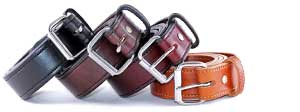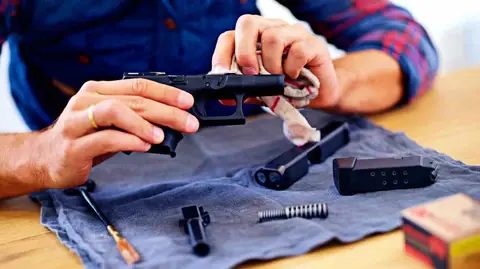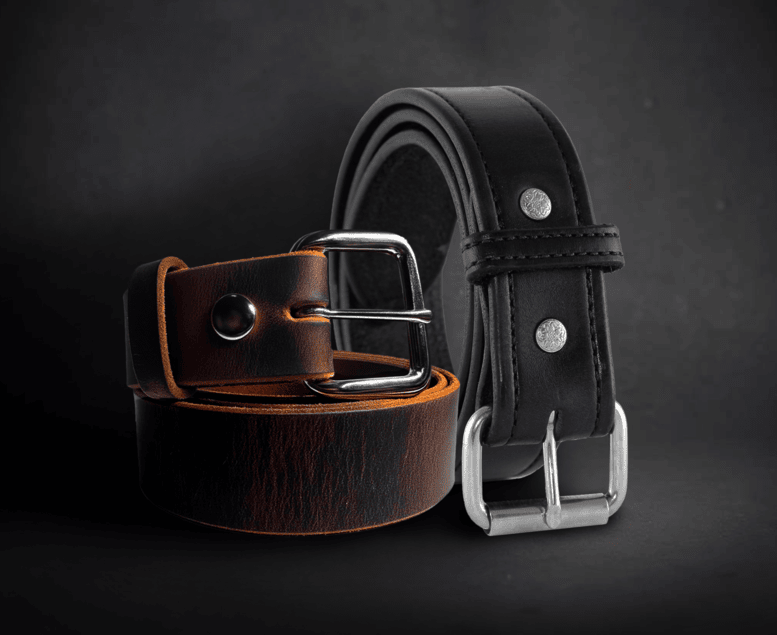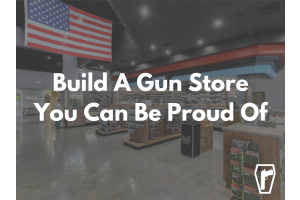FN Five-seveN 5.7x28mm [HD] Cleaning & Features
![FN Five-seveN 5.7x28mm [HD] Cleaning & Features](https://ubcmedia.s3.us-east-2.amazonaws.com/media/wysiwyg/Blogs/FN_57_blog_pic.png)
In this video we're giving you a full high-definition cleaning, features and review of the FN Five-seveN. This is a really unique firearm that fires the 5.7x28mm round, which is more like a rifle round than a handgun round.
Here is a transcript of the video:
Today we're going to be showing you how to properly field strip and clean the FN Five-seveN. The Five-seveN was developed in 1998 as NATO made a request to potentially replace the very popular nine millimeter (9mm) round for their service pistols. The Five-seveN is basically a scaled-down rifle round, that 5.7x28 is a .22 on steroids and you're shooting a carbine round from a pistol platform.
It reduces over-penetration that's seen from other pistol rounds but also has the potential to pierce soft body armor such as Kevlar. For now we're going to turn this over to Chase, and he's going to show us how to properly field strip and clean it.
I'm going to show you how to field strip and clean the FN Five-seveN. Now of course what we want to do is make sure that this firearm is safe to operate with so we want to take out the magazine and check the chamber and make sure there's no rounds.
So, again your magazine release is just behind the trigger guard and pop that out, make sure there's no rounds in there, then rack your slide back, engage your slide catch, and that way I can show you there are no rounds inside the chamber. This gun is actually quite interesting, the way it's designed and the takedown process is actually quite simple.
This is your little takedown, well I guess I'd call it a bar or takedown button, but just like with say like Glock or there's other firearms that you need to do this with but you just want to bring your slide back just slightly and how I usually do that is I put my thumb right on the back of the handle and I just take my fingers and just grip it.
It’s just like squeezing your fingers together and that’ll bring the slide up to a good point. Now, when you do that, you’re going to take that little button and you’re going to slide it all the way back to the back end of the barrel and then push your slide forward. That’ll allow you to take your slide off your frame.
Now what we’re going to do is take apart the slide and it’s very easy. There is no guide rod, there is a recoil spring but it’s on the barrel and it’s compounded on there, so literally all you have to do is take your barrel out. That’s simply by taking this lug, pulling back on it a little bit and then lifting the barrel out. It’s very simple.
Now what we want to do is get some gun cleaner and start cleaning this barrel up. Here I use Hoppe’s Elite Gun Cleaner, it helps remove and break up any kind of powder fouling, which is basically unspent powder or powder residue and then also it takes out lead, copper, all that kind of stuff. It just starts eating away at it to take it off the metal of your barrel and your gun in general. But what we’re going to do is take some of the cleaning patches and cut them in half.
Remember this is a smaller caliber pistol, quite close to or like a .223 round, in the sense of the diameter of the bullet. So, I’ve cut those in half and it would be nice to just have a lead that was small enough but I don’t have one here. So what I’m going to do is use this little punch on the end of my cleaning rod, and that will just help bring this cleaning swab with the gun cleaner on it throughout the whole barrel.
What I’m going to do is put this swab with the gun cleaner and go through the bore side of barrel, or the back end. You don’t really want to go in through the muzzle side, because this is where your crown is. The crown is where the rifling in your barrel ends and of course if you mess that up in any sort of manner, if you nick it, anything like that, it’s just going to affect your accuracy and of course this gun, you know, some people carry for concealed carry, and then others just for fun, but of course either way, with that kind of rifle round that’s used in it, you want to be quite accurate with it.
So I’m going to go ahead and put my swab on here and coat my barrel, that way some of that gun cleaner can sit in there and start eating away at any of that powder fouling. I’m also going to wipe down basically my feed ramp, it’s just literally a dip or cone and just make sure that get some of this cleaner on there. Another good place to get some cleaner would be the recoil spring that’s on the barrel, so I’m just going to go ahead and wipe this down and get a little coat on there.
That’s all you have to do for your barrel, and we’re just going to want to let that sit. When you’re using gun cleaner, you’d want to leave it in for a good five minutes or ten minutes. Of course, for the sake of this video, I just want to show you how and what to use but you don’t necessarily have to wait five, ten minutes but it’s just a suggestion.
Now we want to get some coating of that gun cleaner inside our frame because there is metal inside here that’s covered in that polymer. I’m going to use a nylon brush, I just sprayed some of my cleaner just up towards the front of it and you can even use a toothbrush, it works just the same. Where those slide rails are, I’m just going to take this gun cleaner, get it in these grooves. I want to stay away from the striker fire system, don’t really want to get any cleaner in there.
Also, I want to scrub my bolt face, it’s important to scrub this because you have your extractor here, too and of course your firing pin hole and that can get dunked up with all kinds of different powder and dirt. It’s important to scrub this down, too. What I always do is I turn it upside down, that way I don’t get any of the gun cleaner or dirt dripping into the striker fire system. I just want to give this a quick little scrub and get some of this gun cleaner on there so it can start eating away at all that copper, brass and powder.
Now that’s sitting on there, I’m just going to go over the frame of the gun. Of course there are some metal parts in here, it is mainly all polymer though. Again, those gases when you fire a firearm, go everywhere throughout the gun, so it is important just to give it a good run through.
If you see any kind of discoloration on the metal, this starts to look a little blackened, then you just want to give it a quick little scrub. That’s all you really have to do with the frame. Now something that I always suggest is something that people forget to clean, and that’s your magazine. The magazines don’t need to be cleaned every single time, but remember there is ways for dirt and powder to get inside of here, so it’s always good just to wipe them down, and again you have a metal spring in there and you want to address that metal.
With these magazines, there’s no real detent pin, you really have to kind of knock your base plate off. You can just use a screwdriver, just tap on the end of it until it starts to come off. Take it off all the way, making sure to put your thumb over the baseplate, because that spring will fly out. I just wanted to show you how exactly to take this off, we’re not going to go through the process of cleaning it.
Very simple, just take a brush, clean inside of it, take some cotton swabs on a lead on a cleaning rod and then wipe it down, then wipe down your spring. This is mainly polymer, so you don’t really have to worry about it too much, but there is that metal spring inside and when you’re ready to put it back on, it does take some force but you just have to hit it on, then your magazine is ready to go.
Now that the cleaner has been sitting in there for a little bit, what we’re going to do is address the barrel again, but what I’m going to do is scrub it out, so I have a little .22 caliber brush right here, and I’m going to go in through the bore side. I’m just going to give this a good run through. Something else to notice about this is that because of that rifle shaped round, you do have quite the bore axis right here, so it is important to brush this out.
I need more of a .32 caliber, but don’t forget to brush right in here, going in a little circle, getting in right before the rifling that way I can get any kind of deposits that have set in there. Since that’s all done, I’m going to go ahead and I’m going to wipe it all down now. It would be best if we had a little .22 caliber lead, but I do have one of these little punches, I’m going to take a clean cloth, set it over the punch, and give it a run through.
As you can see, that’s all stuff that was in the barrel, this is why you want to clean your firearm. What I’m going to also do, that little bore access is a bit wider, so I’m going to take a cleaning cloth and bunch it up, then wipe down the inside again. Our barrel is now clean and now that’s done, so I’m going to do the same thing for my slide.
I’m going to wipe off all that excess cleaner, using one of my cleaning swabs. You can do this with a cloth too, and I’m going to get all the areas that I can with my fingers and the cloth. I also have some other cleaning supplies here. What I use are these little Q-tips, these are gun cleaning Q-tips, but you can just go to the store and get regular Q-tips.
Those work just fine as well, and anywhere that my fingers couldn’t fit, I’m just going to address with this cotton swab. Those little slide rails and again, those slide rails are just on the back of the firearm, there’s nothing up towards the muzzle. We want to get our bolt face. Check for any kind of discoloration, look the firearm over, if it’s still dirty, you’ll just have to repeat these steps. It’s worth having a clean gun.
Same thing with the frame, there’s not really too many wide parts so I’m just going to use my Q-tip and I’m going to get down in all the areas that I wiped down with gun cleaner. This just takes your eye, just look anywhere where there is metal, anywhere that you could put the cleaner, you just want to run over it, and make sure that you dry it up.
I also see some debris just on the polymer so I’m trying to pick that up. That’s pretty much all you need to do. There wasn’t that much in there, but still an important step to do. Now your pistol is ready to put back together, and again its very simple. Just take your slide, insert your barrel, of course it’s on that recoil spring so you just need to pull back on it and let it go forward.
Something else to note, is that you want to make sure that it goes in straight, you don’t want those lugs to be cocked off to the side. It’ll probably engage but just for safety purposes just go ahead and make sure that it’s straight along with the slide. You just have to line up your back rails. This block, this barrel block, is going to go just in front of your takedown button. Just set it in there, line it up with your rails and then pull back your slide. Now your gun is clean and ready to go back out to the range.
Alright, now we’re going to go over some additional details for the FN Five-seveN, starting up here with the sights. The Five-seveN comes with either fixed Trijicon sights or like this model has, adjustable sights. You’ve got a three dot sight system here and the rear sight is adjustable for windage and elevation which is a unique feature on a pistol.
The slide itself is made from metal and it’s encased in polymer, which a lot of the components throughout this firearm are either made from polymer or encased in polymer, making this weapon so light. The polymer also adds to durability of the slide and the other components that are covered in the polymer.
It’s a matte black finish so it reduces glare that you might have and up here you’ve got front slide serrations and rear slide serrations and also charging grips here on the back of the slide to make racking the slide to the rear even easier. The barrel itself, you can see that with that 5.7x28mm round you’re going to have a smaller diameter barrel than most handgun barrels would be.
This barrel is made from cold hammer-forged steel and is lined with chrome on the inside of the barrel to help extend the service life of it. Moving on down into the frame, you’ve got the polymer frame here of course, and here’s an ambidextrous safety, though the interesting thing about this safety is that it’s actually forward of the grip rather reverse of or on the grip like a lot of firearms are, where they normally have the safety somewhere around here, as a thumb safety.
It takes a little bit of getting used to with this safety like that to disengage and engage the safety, and you can actually use it with your off-hand, too, instead of your trigger finger. Most people find that it’s easier with the trigger finger though. The trigger guard is serrated on the front here, and is large enough to accommodate a gloved finger.
Now this probably isn’t a firearm that you’re going to be carrying for concealed carry, although I’m sure some people do, a lot of times it’s going to be used as a service weapon or a home defense weapon, so if it is your service weapon, you can feel comfortable knowing that this firearm has an appropriate size trigger to get a gloved finger in there if you’re on duty and wearing gloves in the winter.
The trigger itself is textured on the front, so you get a good feel there if you’re just using you’re bare finger. It’s a pretty crip, even pull all the way to the rear, has a clean break and the reset is both audible and tactile. Now, on this side of the firearm, you can see here you’ve got your takedown mechanism, which is kind of like a Glock takedown mechanism except that instead of pulling down, it pulls to the rear and that’s how you take down the firearm, as Chase showed you in the video.
Now here’s the other side of that ambidextrous safety, and right here is your slide catch. I would say this is more of a slide catch than a slide catch and release because it’s pretty hard to disengage without pulling the slide to the rear if you don’t have a fresh magazine in there and you’re just trying to send the slide forward.
This is the magazine release, it’s pretty substantial, it sticks out quite a bit but that makes it really easy to find with your thumb, and if you’re using this as a service weapon, that’s what you want, you don’t want to have to try and find the magazine release when you need to quickly change magazines. Another cool feature about this magazine release is that it’s actually reversible so if you’re right handed you can keep it on this side, if you’re left handed, you can change it so you can disengage that magazine release with your left thumb right over here.
One thing that I really like about this firearm is the grip texturing throughout the grip. Here you’ve got these pyramids grips throughout the handle of the firearm and they’re really aggressive. They kind of bite into your hand and you get a really good purchase on the firearm. On the frontstraps and backstraps of the firearm you’ve got these horizontal grip texture here, which is again is not overly aggressive but it’s nice to have.
The magazine itself is also polymer, adding to the light weight of the firearm as a whole and holds 20 (twenty) rounds of 5.7x28mm. The bottom, the baseplate, of this magazine is actually contoured, it’s not perfectly flat, so that when you’re reinserting the magazine, it fits nicely in the palm of your hand.
The FN Five-seveN is a really unique firearm, and chambered in that 5.7x28mm round, which was designed to help reduce over-penetration, especially when in an urban environment. This is why it’s used by a lot of police and military forces especially in Europe where the buildings are a lot closer together, but that also makes it a great round for home defense.
So this is a really unique firearm, I’d suggest you check it out, try and take it out to the range and see how you like it. That’s all for this cleaning video of the FN Five-seveN and if you liked it, share it with your friends on social media, and be sure to subscribe to the Urban Carry YouTube channel so you can get more information on gun care, concealed carry best practices, and how to utilize the full line of Urban Carry products. That’s it for today, and until next time, keep calm and return fire.










